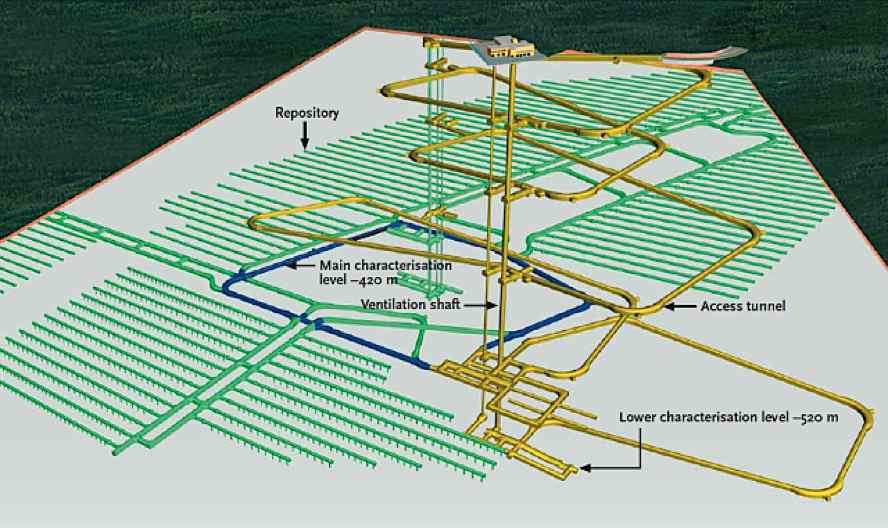A movie for every day of the year – a good one
5 August
Nuclear Test Ban Treaty, 1963
On this day in 1963, the “treaty banning nuclear weapon tests in the atmosphere, outer space and under water” was signed by the governments of the USSR, the United Kingdom and the USA in Moscow. Though there was general unease about the increase in radiation on planet Earth, the ban had been proposed first by the USSR in the early 1950s, though in its version of the treaty, no rigorous procedures would have been included to verify whether signatories were keeping their end of the bargain. The USSR finally yielded to the US and UK’s positions and full discussions were opened in 1963. After the initial signing, the treaty was thrown open to all countries to sign. To date only three countries – China, North Korea and France – have not signed.
Into Eternity (2010, dir: Michael Madsen)
Can you responsibly create something incredibly toxic and then ask not just your children but generations stretching 100,000 years into the future to look after it? There isn’t a civilisation on Earth that has lasted even a tenth of that time, not even the Chinese, and yet that’s exactly what we’re doing with our nuclear waste, between 200 to 300,000 tonnes of which will be hanging around, needing somewhere safe to sit out eternity.
This brilliantly researched, urgent film tells the story of the best solution humanity has come up with so far: bury the stuff deep underground in a place called Onkalo in Finland, where the bedrock is supposedly stable enough to withstand anything that people or nature can throw at it. Excavation began in 2004 and the project goes live, if that’s the word for deadly nuclear waste, in 2020. One scientist goes on record to state that it’s his “personal belief that no human intrusion will happen at any time scale, ever.” Fair enough. A belief. In a world where no belief system is older than the low thousands of years.
In among the awesome images of this vast “underground city”, as one worker there describes it, being excavated deep in the earth’s bowels, writer/director Michael Madsen (no, not that one) gives ample space for the scientists involved in the project to explain themselves. And to give them credit they have really thought about how to prevent the radiation to escape from its boron steel canister (wrapped in copper surrounded by bentonite clay and then encased in a rocky tomb). One of their disaster scenarios imagines nuclear bombs, another a world where all human civilisation has been blown away by another ice age.
And the more they talk, the more conclusively these brilliant minds put the noose around their necks. In effect we’re all relying on the imagination of a bunch of fallible scientists. This is most starkly brought home as we eavesdrop on a meeting to discuss “markers”, the signs left around the area to warn the people of maybe 80,000 years hence (point of reference: Neanderthals flourished only 35,000 years ago), that they’re approaching something dangerous. One of the boffins suggests a picture of Edvard Munch’s Scream, reasoning that the image is so potent it must be “universal”. Fair enough, but if that’s the case, why didn’t some primitive Munch paint something like Scream 10,000 years ago?
As with the best documentaries, Madsen asks very simple questions and gets right to the heart of the matter. The Onkalo Spent Nuclear Fuel Repository is an ambitious and in many ways an elegant and brilliant project. But has anyone really thought through all the ramifications? Could anyone? Most tellingly, at key points where Madsen interrogates the bosses of the project about one failsafe system or another, we also get to see the look on an assistant’s face as his/her boss gives a big, bland reassurance that everything has been thought of and it’s all going to be ok, trust me. The look is saying something far less confident.
For sure, Into Eternity is making a political point. But even if you don’t agree with its approach, you still have to answer its questions. They’re good questions. And even if they weren’t, the images Madsen has collected of this vast civil engineering project will blow you away. If you’ll pardon the expression.
Why Watch?
- The remarkable access
- Madsen does not blind us with science; he is highly informative
- Answers, such as they are, from the people who know
- The remarkable underground footage
Into Eternity – Watch it/buy it now at Amazon
I am an Amazon affiliate
© Steve Morrissey 2014

